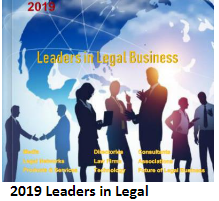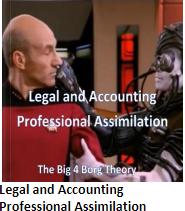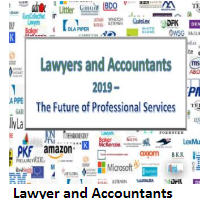Mark Ross & Vince Neicho Principal, Deloitte - Legal Business Services ; Formerly VP of Legal Services, Integreon
Mark Ross Principal, Deloitte
- Legal Business Services and formerly headed Integreon’s
Contracts, Compliance and Commercial (CCC) business unit, with accountability
for the P&L, solution development, and delivery across the U.S., U.K.,
India, South Africa, and the Philippines.
Mark is a recognized thought leader in the Legal Process Outsourcing (LPO) field. He is a former partner at the first U.K. law firm to offshore legal work, and is the only person to have been invited to address the ABA, the Law Societies of England & Wales and South Africa, The Solicitors Regulation Authority, and the International Bar Association on the topic of LPO.
Mark pioneered the
development of the collaborative law firm and LPO delivery model for end-to-end
contract management and led the integration of artificial intelligence into
Integreon’s contract review services. He also developed the first State Bar
minimum continuing legal education (MCLE) and continuing professional
development (CPD) accredited courses on the ethical implications of outsourcing
legal work.
He has been interviewed
by numerous publications, including The
New York Times, Wall Street Journal,
and Time magazine, and has also been
invited to speak as a leading authority on LPO by organizations that include: Financial Times, U.C. Berkeley School of
Law, Northwestern University School of Law, Stanford Center for the Legal
Profession, and the International Legal Ethics conference.
Mark is on the editorial
board of Outsource Magazine, and is on
the Advisory Boards of Suffolk Law School’s Institute on Law Practice
Technology and Innovation, and Northwestern University Law School’s Center for
Practice Engagement and Innovation.
In September 2016 Mark
was inducted as a Fellow of the College of Law Practice Management.
Vince Neicho, formerly
a U.K. legal industry veteran, is an expert legal solutions consultant with a
focus on law firms and corporate legal departments engaging in e-disclosure,
e-discovery, and document review. Neicho leverages his expertise in the
litigation support field to help Integreon clients design and plan highly
efficient processes, establish flexible and scalable resourcing models, and
utilise the latest innovative technologies, including predictive coding and
other types of artificial intelligence systems.
Neicho was previously Litigation Support Senior Manager at Allen & Overy, a global Magic Circle firm, where he introduced the concept of outsourced document review. At A&O he amassed years of experience working with the firm's extensive corporate and financial institution clientele on hundreds of matters, designing and managing a wide variety of litigation support solutions and technologies.
______________________________________________________________________________
Even before the onset of the global financial crisis in 2008, in-house legal departments and their outside counsel were under considerable pressure to do more with less. The Great Recession exacerbated this pressure and led to a surge in the exploration of innovative legal services delivery models. Two key questions came to the fore for the in-house legal department: 1) Can we reduce or eliminate the need to undertake certain legal services? 2) For the services we must consume, how can we do so as cost-effectively as possible?
Stemming from these questions, a new legal ecosystem
emerged in which, alongside in-house resources and outside counsel, legal
process outsourcing (LPO) began to play a crucial role in the efficient
delivery of legal services. Initially, the LPO industry’s raison d’être was the
labor arbitrage benefits available from outsourcing certain routine legal tasks
to lower-cost locations such as India, South Africa, and the Philippines. The
class of providers augmenting the work of in-house departments and outside
counsel has since matured and grown significantly — to the point that the “LPO”
terminology is not inclusive enough to capture them. Today, a robust group of
companies more accurately described as alternative legal services providers
(ALSPs) are handling sophisticated work at a level we could not have anticipated
even a few years ago.
Much of
that transformation is because of ALSPs increasingly leveraging technology,
particularly artificial intelligence (AI). This article will discuss the impact
of ALSPs (and the AI that some of them employ) on the legal landscape. It will
then address the journey law firms have navigated in their use of ALSPs to date
and what to expect in the future.
Artificial Intelligence: Does It Play Well With Others in the Legal Industry?
To appreciate how rapidly the ground has shifted in the legal industry, consider the question we raised in the first edition of this text just three years ago. We noted then, as we did above, that LPOs (what we might now think of as first-generation ALSPs) were powered by human labor; they leveraged the low cost of labor in remote locations to drive down the cost of document review. It seems a quaint concern now, but it is understandable that many wondered at the time whether the introduction of technology into the field of legal services would threaten the existence of LPOs. In a passage that has stood up well, we addressed the concern as follows:
While some might argue that technological advances represent a competitive challenge to LPO, nothing could be further from the truth. It is technology that led to the advent of LPO, enabling offshore locations to interact with clients thousands of miles away, and it is the LPO industry that has since continued embracing and incorporating technology into virtually every element of its legal services delivery offerings, including assisting and advising corporations and law firms on the selection and implementation of enabling technologies. It is the LPO industry that now pushes the envelope to redefine the art of possibility in the legal field, providing expert consultants who can weave together advanced technologies as an integral thread in overall legal process transformation.
In retrospect, we were correct to note that technology
made LPOs — or first-generation ALSPs — possible in the first place, and even
more correct to emphasize that future ALSPs would “continue embracing and
incorporating technology” into legal services. This has proved emphatically
true. The leading ALSPs of today are almost exclusively thought of as companies
pioneering the utilization of enabling technologies, and correctly so.
In fact, the question being asked now is almost a
complete reversal from the one we discussed in the first edition. It is not
whether technology will kill ALSPs, but whether ALSPs powered by technology — specifically,
artificial intelligence — will kill law firms. Again, our answer is no.
It is indisputable, of course, that technology-assisted document review, legal research, deal rooms, e-billing software, data analytics, knowledge management, and document assembly have eliminated the need for firms to devote man hours to certain tasks. It’s also true that the application of artificial intelligence is only making the tools of automation more powerful. But the ways in which ALSPs are applying technology to various areas of legal practice are illuminating, revealing that technology tools remain complements to human legal practice, not a replacement for it.
Litigation
The days are gone in which huge teams of attorneys reviewed
hundreds of thousands — or millions — of unfiltered documents. And it is no
longer relatively inexpensive, remote labor that performs the task of document
review. The leading ALSPs have long been proselytizers of technology-assisted
review (TAR) and have been constantly developing, testing, and refining their
workflows to deliver smarter and less costly review processes. ALSPs deploy
these technologies in a variety of ways, from supporting a quality control
process to leveraging artificial intelligence to perform predictive coding.
Likewise, many ALSPs have created platforms to apply natural language processing, machine learning, and artificial intelligence to the task of legal research. Entrants such as Casetext and Ravel Law offer AI-backed research capabilities and other features. Ravel Law’s Judge Analytics, to cite one example, allows litigants to view a judge’s entire history of decisions in different types of cases. Meanwhile, Allegory, a recent Integreon acquisition, uses what it calls “augmented intelligence” to automate litigation management. Allegory makes it much easier for trial lawyers to access relevant information and makes formerly cumbersome litigation tasks like creating evidence binders a painless process.
Contract Management and Review
In corporate departments, AI has led to impressive
developments in the areas of due diligence, contract extraction, and contract data
analytics. As with litigation, ALSPs have been at the forefront of these
developments. Often triggered by the implementation of a CLM platform, an
acquisition, or an audit, corporations can be faced with the need to locate,
review, and extract information from thousands of contracts. ALSPs offer
technological tools available that can support such an engagement. Integreon,
for example, uses Kira’s machine-learning-based technology to assist clients
with contract extraction, due diligence, contract analysis, and lease
abstraction.
Automated metadata extraction, categorization, and related technologies greatly reduce the cost of a contract-by-contract review performed by lawyers. Even when performing those tasks, however, ALSPs frequently support their technological tools with a review by legally trained personnel; it is this combination of human- and technology-driven analysis that provides the most effective end-to-end solution.
Legal Spend Analytics
Legal spend analytics is another area in which technology
is being used to achieve more cost-effective legal services. By analyzing data
from legal invoices, corporate legal departments can benchmark historical
charges from outside counsel and vendors for a variety of legal services. ALSPs
in this area use technology to produce reports that not only track outside
counsel spending (broken down by firm, practice areas, timekeeper), but also
include savings opportunities, progress against budgets, and other key metrics.
Knowledge is power, and these technology-driven legal-spend analytics tools allow corporate legal departments to revisit their entire relationship with outside counsel — from how they select firms, to how they manage them, to when they cut ties with them — from the position of power. The end game is one in which resource allocation is optimized, using the right legal professionals and technology for the jobs to which they are best suited
The Impact of AI
The takeaway from the above should not be that ALSPs, and
the artificial intelligence they sometimes employ, is encroaching meaningfully
on the territory of law firms. Instead, in each area, the theme is the same: While
technology solutions are automating certain tasks and offering lawyers new
insights, the human element remains as important as ever in delivering legal
services. AI tools still require that lawyers perform a quality-control check,
as they routinely do for contract- and document-review solutions. Lawyers are
also needed to provide the input that trains the AI tools to become more
powerful.
Most importantly, even with the introduction of artificial intelligence in the legal industry, the heart of a lawyer’s work — legal reasoning, crafting strategy, negotiating with counter-parties, arguing in court, and more — remains largely untouched by technology. Indeed, technology-driven ALSPs are not replacing law firms, but rather: 1) reducing the cost of certain services and 2) allowing them to make more informed strategic decisions. In this sense, ALSPs have advanced beyond LPOs, which were initially aimed exclusively at the first goal. But in another sense, the introduction of AI is similar to the arrival of LPOs: It is a disruption to which some law firms will react better than others. The history of law firms’ reaction to ALSPs, which follows, shows us as much.
Redefining the Law Firm Delivery Model: a Journey of ALSP Acceptance
In order to survive in today’s economy and to thrive in
the future, many law firms are actively rethinking their business models. This
rethink frequently includes an embrace of ALSPs and a reexamination of the
traditional pyramid structure as the usual modus operandi for legal services
delivery.
Although some believe ALSPs will increasingly contract directly with corporate clients, it is important to consider that they do not practice law and therefore cannot replace law firms entirely. A more natural fit for ALSPs is to supplant the base of the law firm pyramid. This is not to suggest the only benefit of ALSPs is labor arbitrage. As discussed above, we have ample proof this it is not. What ALSPs are doing is leading the way in incorporation of technology into legal services delivery.
Kicking and Screaming
In or around 2006, it was not law firms but corporate legal
departments that were the first proponents of ALSPs. Back in these early days,
a cocktail of incredulity with a dash of disdain was the tipple of choice for
many a law firm partner when confronted with the ALSP elevator pitch. Big Law
executives would protest that ALSPs were win-win-lose: win for the firm’s
clients, win for the ALSP, and yet lose for the law firm.
This viewpoint presupposes the adequacy of two hypotheses
that simply do not hold water any longer: the zero-sum game (the more the
client loses, the more the law firm wins) and that every penny of revenue
generated by an ALSP is a penny of revenue lost by the law firm.
In any event, these first couple of years can be
characterized, perhaps somewhat harshly, as the phase where law firms were
dragged “kicking and screaming” into the arms of ALSPs.
On a case-by-case basis, in-house counsel started to advise their outside counsel that in order to retain their business, the firms must begin to use ALSPs. In fairness to BigLaw, this phase has largely passed and did so fairly quickly. Whether the Great Recession forced them to adapt quickly or merely coincided with a change in attitude is a debate for another day.
Checking the Box
Law firms have many constituencies, but their clients
always come first. Large firm clients are, by and large, cost-sensitive
in-house counsel. Firms can gain both a perception and actual advantage with
clients by making clear they understand and are responding to the cost
pressures facing their clients.
In-house counsel muscle-flexing manifested itself not only
in ad hoc requests that their outside counsel use an ALSP, but also in the
increasing prevalence of requests for proposals (RFPs) asking outside counsel
whether they had relationships in place with ALSPs.
Law firms responded in turn by undertaking selection processes of their own to choose one or more preferred ALSPs. The end result was that when asked the question in an RFP, law firms could respond in the affirmative. This is the “checking the box” phase. Many of the firms during this phase were simply looking to place a check in the box, and once a master services agreement was put in place between the firm and the ALSP, it was considered a job well done with no further action required. Many firms today are struggling with how to navigate the transition from the “checking the box” phase into the phase that follows: “strategic collaboration.”
Strategic Collaboration
In 2011, our employer Integreon commissioned research
tracking the adoption of ALSPs among law firms and in-house counsel. While a
minority of firms seemed to worry that using an ALSP might send clients the
wrong signal, the results of the research showed such fear to be unfounded. A
significant majority, about 75 percent, of both in-house and law firm lawyers
believed using an ALSP did not “diminish the brand.” Rather, those that
embraced ALSPs were perceived as cognizant of the cost, efficiency, and quality
demands of their clients, and consequently appeared to gain a competitive
advantage. Today, a significant number of innovative law firms now publicly
acknowledge their relationships with ALSPs. These firms are at various stages
of the journey that can be termed as “strategic collaboration.”
The end of this journey, one that arguably no firm has yet
reached, is when ALSP solutions are so closely integrated into the firm’s
overall value proposition that they are simply viewed as part of a suite of
solutions that the firm provides to its clients across all of its practice
groups. This requires firms to embrace ALSPs at a strategic level, welcoming
them into the firm, lifting open the hood, and working with the provider, as
Professor Richard Susskind would say, to “decompose” legal functions, map out
“as is” workflows, and then reengineer the processes to incorporate ALSP best
practices, lower-cost labor, and technology.
The
theory behind strategic collaboration is not rocket science. The premise is
that the whole is greater than the sum of the parts. Contrary to early concerns
that ALSPs would compete directly with law firms, it has become abundantly
clear to those firms embracing strategic collaboration that the most effective
legal services delivery model is a symbiotic one in which law firms and ALSPs
help each other thrive.
ALSPs
do not practice law and so are not true alternatives to law firms. Neither
ALSPs nor law firms can individually deliver the holistic, end-to-end services
corporate clients are now demanding. While one could argue that law firms with
captive ALSP units can do so, the fact is that running a captive center,
especially offshore, requires a scale that only the largest law firms possess.
Even with respect to those few firms, ALSPs offer several other advantages over
a captive. These include better capacity utilization by aggregating demand
across many clients; conversion of fixed to variable costs; ongoing investments
in technology and continuous improvement; and, of course, business continuity
assurance with multiple delivery locations.
A
common misconception held by proponents of captives is that working with a
third-party ALSP means loss of control. This is not the case. Control is more
about governance than ownership. For example, some captives are out of control
because they have not been properly set up with service level agreements
(SLAs). Conversely, a proper SLA and governance structure can give the law firm
more control over a third-party ALSP than they might typically have over their
own staff.
Law firms that strategically collaborate with ALSPs, meanwhile, can expand their offerings and deliver a complete, end-to-end approach, efficiently providing the appropriate level of legal services required for each type of work product.
Bifurcated Ownership
Unrelenting
cost pressure, deregulation, disaggregation, globalization, and technological
advances were the genesis of the ALSP sector. Today, the challenge and the
opportunity are for ALSPs and law firm clients to develop new service delivery
models that will drive even greater innovation. One can either shape the change
or be shaped by it. It is incumbent upon all the key constituent stakeholders
in the legal services industry to find better ways of working together.
In
coming years, there is no doubt we will see even closer collaboration between
law firms and ALSPs, with the lines of ownership of the legal services delivery
model becoming increasingly blurred as these stakeholders invest in and enter
into joint ventures with one another. This can be called the “bifurcated
ownership” phase.
How
long will it be before an ALSP acquires a major law firm in the U.K. now that
external investment in law firms is permitted via the Legal Services Act?
Hardly a week goes by without the rumor mill spinning a story about this law
firm or that law firm seeking to monetize either their captive ALSP operation
or their high-volume practice group. For many of the reasons cited above, it is
likely that the majority of those law firms with captive ALSPs today will look
to divest these operations in the coming years. Global ALSPs are the most
logical acquirers of these entities.
As time progresses, there is a growing optimism about and enthusiasm for reshaping the way legal services are delivered. The new bifurcated model is inevitable. The end result of the journey to this final fourth phase is a seamlessly integrated delivery model, with clients of all kinds benefiting from better, faster, more readily accessible, and cheaper legal services.
What’s Next?
We
remain more bullish than ever about the prospects for ALSPs. The industry has
matured and transformed over the last 10 years, but that journey, that evolution,
has in reality still only just begun.
Out of all of the different stakeholders providing legal services within the new legal ecosystem, it is the ALSPs that have the deepest experience deconstructing and reengineering legal processes using Lean and Six Sigma techniques, applying best practices and flexible resources, and optimizing the mix and utilization of technology, including AI. It is the ALSPs that have the demonstrated expertise to analyze which aspects of the work done by lawyers, paralegals, and support staff can be complemented through automation or the application of AI. As the rollercoaster of legal services innovation and technological advances continues to pick up pace, not only will ALSPs be along for the ride, but they’ll also have front row seats.

 Software
Software Law
Law Legal
Legal






